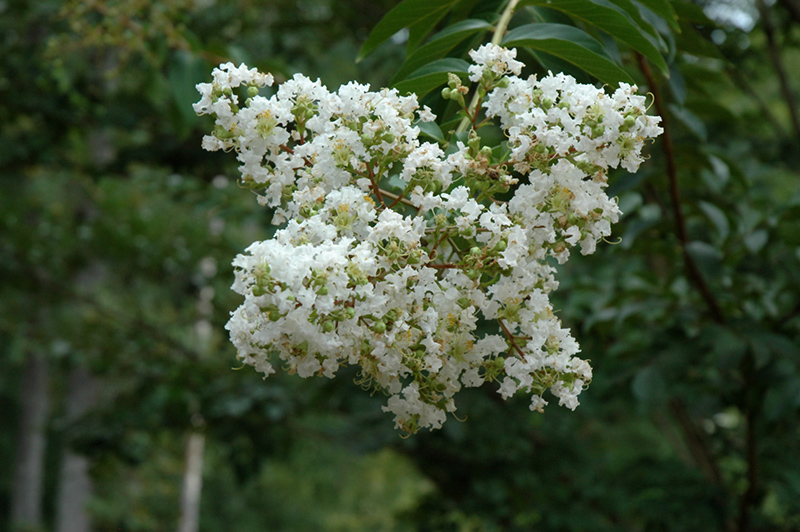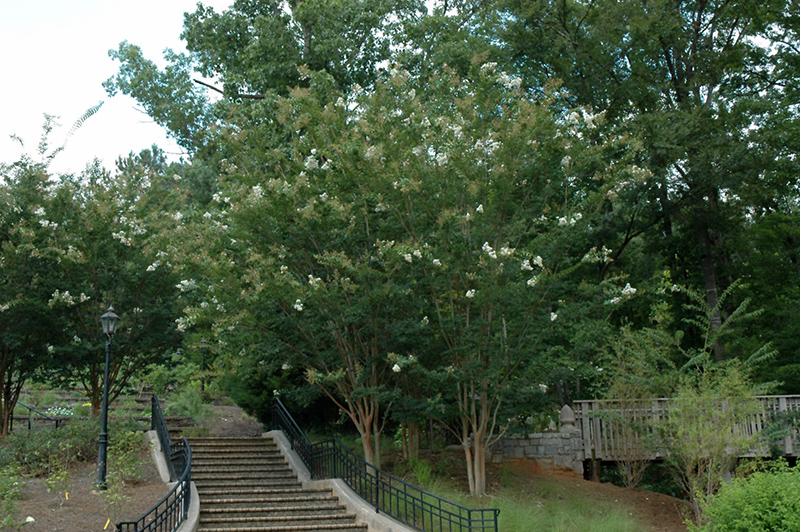Sarah's Favorite Crapemyrtle
Lagerstroemia indica 'Sarah's Favorite'
Height: 25 feet
Spread: 20 feet
Sunlight:
![]()
Hardiness Zone: 6a
Other Names: Crape Myrtle, Crepe Myrtle
Description:
This stunning ornamental shrub or small tree produces volumes of elegant white blooms in summer, followed by orange-red fall foliage; a captivating focal point for the garden or border; best pruning Jan-Mar
Ornamental Features
Sarah's Favorite Crapemyrtle is clothed in stunning panicles of white frilly flowers at the ends of the branches from mid summer to early fall. It has attractive dark green deciduous foliage which emerges coppery-bronze in spring. The oval leaves are highly ornamental and turn red in fall.
Landscape Attributes
Sarah's Favorite Crapemyrtle is a dense multi-stemmed deciduous tree with an upright spreading habit of growth. Its relatively fine texture sets it apart from other landscape plants with less refined foliage.
This is a relatively low maintenance tree, and is best pruned in late winter once the threat of extreme cold has passed. It is a good choice for attracting birds and butterflies to your yard, but is not particularly attractive to deer who tend to leave it alone in favor of tastier treats. It has no significant negative characteristics.
Sarah's Favorite Crapemyrtle is recommended for the following landscape applications;
- Accent
- Mass Planting
- Hedges/Screening
- General Garden Use
Planting & Growing
Sarah's Favorite Crapemyrtle will grow to be about 25 feet tall at maturity, with a spread of 20 feet. It has a low canopy with a typical clearance of 3 feet from the ground, and is suitable for planting under power lines. It grows at a fast rate, and under ideal conditions can be expected to live for approximately 20 years.
This tree should only be grown in full sunlight. It is very adaptable to both dry and moist growing conditions, but will not tolerate any standing water. It is considered to be drought-tolerant, and thus makes an ideal choice for xeriscaping or the moisture-conserving landscape. It is particular about its soil conditions, with a strong preference for rich, acidic soils. It is highly tolerant of urban pollution and will even thrive in inner city environments. This is a selected variety of a species not originally from North America.



